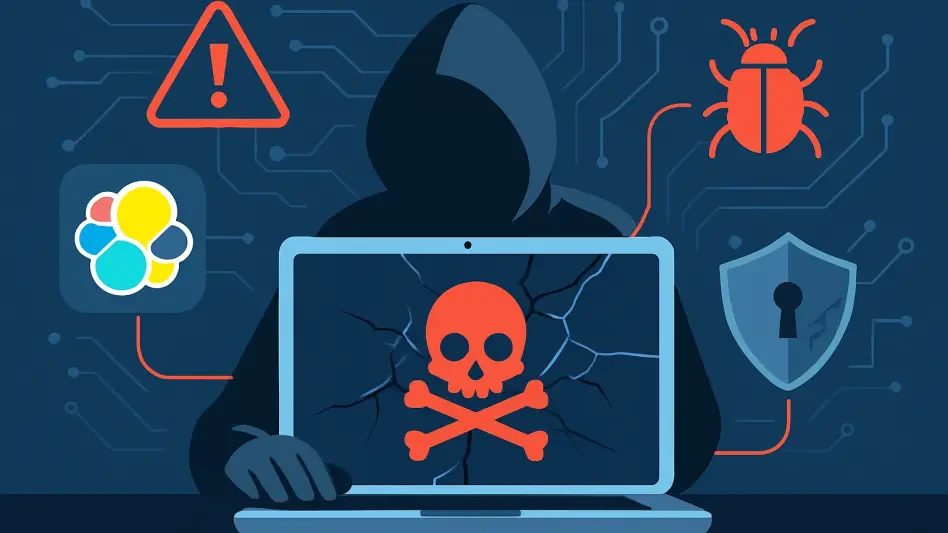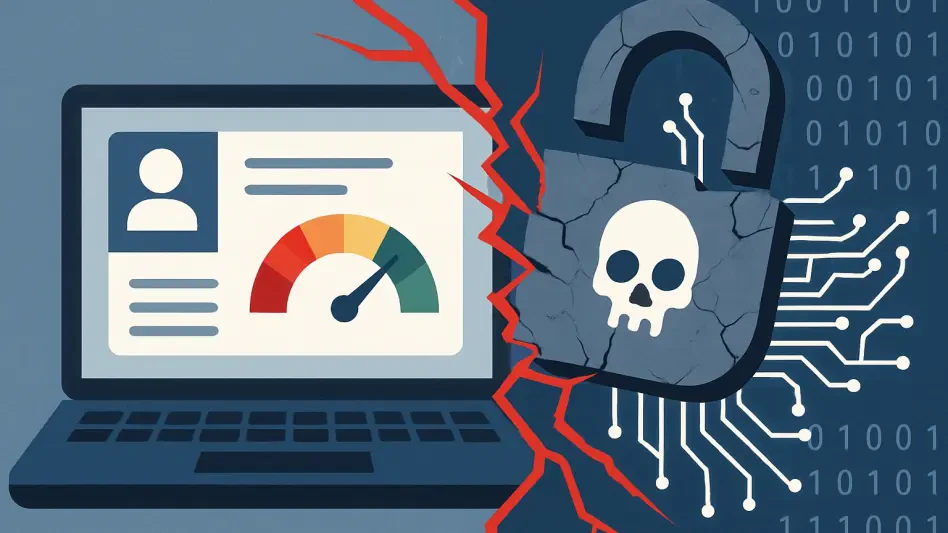In the ever-evolving landscape of cybersecurity, trust in protective tools is paramount, yet a recent disclosure about a critical zero-day vulnerability in Elastic’s Endpoint Detection and Response (EDR) software has shaken confidence in this widely used solution, raising urgent concerns. Discovered by a cybersecurity research entity, this flaw in the Microsoft-signed kernel driver, specifically version 8.17.6 of “elastic-endpoint-driver.sys,” reveals a startling reality: a tool designed to safeguard systems can be transformed into a weapon against them. The severity of this unpatched vulnerability, which enables attackers to bypass security measures, execute malicious code, and even crash systems, raises urgent questions about the reliability of enterprise-grade security software. As organizations depend on such tools to defend against sophisticated threats, this incident underscores the potential risks lurking within trusted defenses, prompting a deeper examination of vendor accountability and the broader implications for cybersecurity practices.
Unveiling the Technical Flaw in Elastic EDR
The core of this alarming issue lies in a NULL pointer dereference vulnerability, classified under CWE-476, within Elastic EDR’s kernel driver. This flaw occurs when user-controllable pointers are passed into kernel functions without adequate validation, leading to catastrophic system failures. Attackers can exploit this through a meticulously crafted four-step attack chain: bypassing security controls with a custom loader, achieving remote code execution with minimal detection, establishing persistence via a custom kernel driver, and triggering repeated system crashes, commonly known as the Blue Screen of Death (BSOD). Such an exploit can be activated during routine operations like compilation tasks, making it a pervasive threat in real-world scenarios. The technical root, a specific instruction in the driver that mishandles NULL or corrupted pointers, exposes a fundamental lapse in design or oversight, turning a protective mechanism into a liability for any system running the affected software version.
Beyond the immediate technical implications, the exploitability of this vulnerability has been demonstrated through a proof-of-concept that showcases its devastating potential. By utilizing custom executable and driver files, researchers illustrated how attackers could not only bypass Elastic’s defenses but also configure persistence and induce system crashes upon reboot. This effectively mimics malware behavior, undermining the very purpose of EDR software. What amplifies the concern is the driver’s Microsoft Windows Hardware Compatibility Publisher signature, a mark of trust that typically assures users of a component’s security. This breach reveals a critical gap in validation processes at the vendor level, highlighting how even signed kernel drivers can become vectors for exploitation if not rigorously tested. For enterprises, this translates to a latent threat embedded within a tool meant to protect, challenging assumptions about the inherent safety of certified software components.
Enterprise Risks and Operational Impacts
For organizations relying on Elastic EDR, the discovery of this zero-day flaw presents an immediate and significant risk to operational stability. The ability of adversaries to remotely disable endpoints by exploiting this vulnerability could lead to widespread disruption, halting business processes and compromising data integrity. Unlike typical malware that might target specific assets, this flaw’s capacity to trigger BSOD crashes across multiple systems simultaneously poses a unique challenge, potentially paralyzing entire networks during critical operations. Enterprises, especially those in sectors with high regulatory oversight like finance or healthcare, face not only technical setbacks but also reputational damage if such vulnerabilities are exploited. The latent threat within a trusted security tool means that every organization using this software unknowingly harbors a potential point of failure, awaiting exploitation by a determined attacker.
Adding to the gravity of the situation is the real-world applicability of the exploit under normal operating conditions, which amplifies its danger. Unlike vulnerabilities that require specific, rare circumstances to be triggered, this flaw can be activated during everyday activities such as process injections or routine compilations, making it a ticking time bomb in enterprise environments. The potential for large-scale disruption is not a theoretical concern but a practical one, as attackers could leverage this to orchestrate coordinated attacks, targeting multiple endpoints to maximize impact. This scenario forces businesses to reconsider their dependency on single-point security solutions, pushing for diversified defense strategies to mitigate risks. Until a patch or robust mitigation is provided, organizations remain vulnerable, caught between the necessity of maintaining security tools and the fear of those tools being turned against them.
Vendor Accountability and Systemic Challenges
The prolonged unpatched status of this vulnerability, despite multiple disclosure attempts since mid-2024, casts a harsh light on vendor accountability in the cybersecurity industry. Reports indicate that efforts to communicate the severity of this flaw through established platforms were met with delays, leaving affected systems exposed for months. This sluggish response raises critical questions about how security vendors prioritize and address zero-day threats, especially when they reside within their own products. For a tool as integral as EDR software, which forms the backbone of enterprise defense, such lapses erode trust and expose systemic deficiencies in vulnerability management protocols. The failure to act swiftly not only jeopardizes user safety but also sets a troubling precedent for how critical flaws are handled in an era of increasingly sophisticated cyber threats.
Moreover, this incident reflects broader trends in the cybersecurity landscape, where security tools themselves are becoming targets for weaponization. The growing complexity of kernel-level attacks, such as those exploiting NULL pointer dereferences, underscores the need for more stringent validation and testing before software deployment. It also highlights the dual role of security researchers who, in this case, acted as both protectors and whistleblowers after uncovering the flaw during legitimate testing. Their findings, initially intended to strengthen the product as paying customers, instead revealed a significant oversight, pointing to a blurred line between defender and potential exploiter. This dynamic emphasizes the urgent need for vendors to foster transparent communication and rapid response mechanisms, ensuring that trust in protective software is not just assumed but actively maintained through accountability and action.
Reflecting on Trust and Future Safeguards
Looking back, the exposure of a zero-day vulnerability in Elastic EDR software served as a sobering reminder of the fragility of trust in cybersecurity tools. The flaw, which enabled attackers to bypass defenses, execute code, maintain persistence, and crash systems, exposed not just technical shortcomings but also operational and systemic gaps that left enterprises vulnerable. The lack of a timely patch, despite repeated disclosures, intensified concerns about vendor responsiveness at a time when cyber threats were growing in sophistication. This incident underscored how even trusted, signed components could become liabilities, challenging long-held assumptions about the safety of enterprise-grade solutions.
Moving forward, organizations must prioritize rigorous validation of security tools, advocating for independent audits to identify potential weaknesses before they are exploited. Vendors, on their part, should establish clearer timelines and protocols for addressing critical flaws, ensuring transparency with users. Diversifying defense strategies to avoid over-reliance on a single solution can also mitigate risks. Ultimately, rebuilding confidence in tools like Elastic EDR demands a collective commitment to swift action, enhanced testing, and open dialogue between vendors, researchers, and enterprises to safeguard against future threats.








